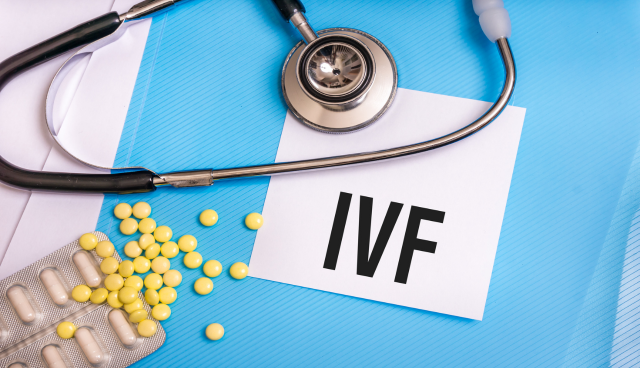
Conquering Infertility: IVF Success Rates in India Now Up to 45% Per Cycle
Wondering what your chances of getting pregnant through IVF in India are? With advanced technologies and skilled doctors, IVF success rates in India have significantly improved over the years. However, success still depends on several factors. Read on to learn about typical IVF success rates in India and what impacts your chances of conception.
Key Points Cover In Blog
IVF Techniques Commonly Used in India
IVF (in vitro fertilization) involves fertilizing eggs with sperm in a lab. The most common IVF techniques used in India include:
- Conventional IVF: Eggs are retrieved and fertilized with sperm in a petri dish. The embryo(s) are then transferred into the uterus. This is the standard IVF procedure.
- ICSI (Intracytoplasmic Sperm Injection): A single sperm is directly injected into each mature egg to achieve fertilization. ICSI is commonly used for male factor infertility issues.
- FET (Frozen Embryo Transfer): Extra high quality embryos from a fresh IVF cycle are frozen to use in future cycles. This avoids additional egg retrievals.
- PGS/PGD (Preimplantation Genetic Screening/Diagnosis): Done along with IVF to check embryos for abnormalities prior to transfer. Helps select the healthiest embryo and can improve IVF success.
Success Rate of IVF in India
The average IVF success rate in India is between 35-45% per cycle according to recent data. For couples under 35 years using their own eggs, IVF success rates per cycle can reach over 65%. As a woman’s age increases, especially over 40, success rates decline.
IVF Success Rates By Age
Age is the most significant factor affecting IVF success in India and globally. Younger women produce higher quality eggs with fewer abnormalities, leading to higher success rates:
- Under 35 Years Old: 65%+ Success Rate: Women under 35 have the highest IVF success rates, with over 65% resulting in a live birth per cycle. This is because younger women have a much higher ovarian reserve and produce higher quality eggs with significantly fewer abnormalities. With a fertile 30-something woman, her eggs, uterus, and other reproductive organs are still at an optimal functioning level for pregnancy. This high egg quality leads to higher quality embryos and increased chances that implantation and conception will occur after the embryo transfer. Even if the first cycle is unsuccessful, women under 35 often have a good response to IVF medication with ample eggs retrieved. This allows multiple embryos to be created in one cycle, some of which can also be frozen for future Frozen Embryo Transfer cycles if needed. Given both higher success per cycle plus remaining fertility potential, under 35 is the most advantageous time to pursue IVF treatment.
- 35-37 Years Old: 55% Success Rate: From 35-37 years old, women still have reasonably good outcomes from IVF treatment in most cases. Average success rates per cycle generally fall to around 55% live births in this age group. Egg quality is declining slightly compared to the early 30’s, but still much better than later years. Chromosome abnormalities and tubal issues also increase somewhat by the mid to late 30’s as overall fertility starts decreasing. However, this is still considered a good age group for IVF cycles. Clinics can still retrieve a decent number of eggs per cycle to create multiple embryos. Extra embryos can be frozen for future attempts if needed. The slight decline to 55% success per cycle is mostly attributed to the start of fertility aging rather than an outright issue. This is still an age bracket with positive IVF success outcomes overall in Indian clinics.
- 38-40 Years Old: 35-45% Success Rate: From 38-40 years old, chances of IVF resulting in pregnancy start to decline more rapidly as egg quantity drops and abnormalities increase. Average success rates range from 35-45% per cycle by this point, with the spread accounting for differences in individual patients. Chromosome issues in embryos rise notably in this bracket, requiring more cycles for viable embryos or reducing implantation potential per transfer. Egg quality deterioration also accelerates in these years, resulting in fewer follicles and eggs retrieved per cycle. Sometimes few or no embryos result from a full IVF cycle. If embryos do form, abnormalities are higher and miscarriage risks increase if pregnancy does occur. More total IVF cycles total may be needed for success up to age 40 before chances drop off steeply. However, with multiple attempts 3 in 4 women can still conceive via IVF.
- Over 40 Years Old: 15-25% Success Rate With Own Eggs: Past age 40, IVF success rates per cycle with a woman’s own eggs drop down to 15-25% on average. This period known as “advanced maternal age” for fertility represents a steep decline in remaining ovarian reserve as menopause approaches. Far fewer follicles respond to IVF drugs making egg retrieval difficult each round. The limited eggs obtained are lower in quality with a high rate of defects. Fewer embryos develop and chromosome issues are prevalent in remaining ones. This causes low implantation rates, higher miscarriage risk and overall much lower IVF success chances per transfer. By early to mid-40’s, 5% or lower live birth rates per cycle are common with a woman’s own eggs. Most in this bracket rely on donor eggs from younger women instead to achieve success with IVF.
The sharp decline after age 40 is due to poorer egg quality and chromosome issues making embryo implantation difficult. Using an egg donor can increase chances for older women. Talk to your doctor about optimal treatment plans for your age.
IVF Success Rate By Number of Embryos Transferred
In the past, multiple embryos were often transferred to increase the odds of conception. However, guidelines now recommend single embryo transfers (SET) to reduce twin/high-order pregnancy risks. Single embryos are chosen based on quality indicators like early cell division rates.
IVF success rates in India by number of embryos transferred:
- SET (Single Embryo Transfer): 35-45% live birth rate
- Double Embryo Transfer: Increases to 55-65% live birth rate
- 3 Embryos: Slightly higher chance but not proportional and high multiple pregnancy risk
As techniques improve, SET success rates approach those of double embryo transfers while almost eliminating twin risk. Extra high quality embryos can also be frozen for future FET cycles.

Keys to Improving IVF Success in India
While age affects ovarian reserve, there are still several ways to optimize success at any age:
- Using PGS/PGD genetic screening to select chromosomally normal embryos
- Choosing a clinic with high standards, lab quality control, and customized protocols
- Having thorough diagnostic testing upfront to identify issues
- Optimizing health pre-treatment via diet, nutrition, lifestyle factors
- Considering supplements to improve egg quality in older women
- Using Frozen Embryo Transfer for better embryo-uterus synchronization
The Bottom Line
Thanks to advanced IVF lab techniques and a skilled reproductive medicine sector, India offers encouraging IVF success rates comparable to western countries. While female age remains the most influential factor, customized treatment plans focused on embryo quality can now achieve high success across age groups. Thorough preparation, patience through potentially multiple cycles, and choosing the right fertility clinic give you the best odds of taking home a healthy baby.
Conclusion
The future looks bright when it comes to IVF success rates in India. As fertility specialists continue to hone laboratory techniques and customize treatment protocols based on a patient’s unique fertility profile, pregnancy rates are expected to keep rising across most age groups. Technological advancements like artificial intelligence to enhance embryo selection and advances in cryopreservation for frozen embryo transfers will only heighten IVF outcomes in the years ahead.
While a woman’s age remains the most critical determinant of IVF success rates in India, today even those in their late 30s and early 40s have reasonably good chances of conceiving babies through IVF – especially when using genetic screening and high quality fertility clinics. Couples dealing with infertility issues have many more options now than even 5 years ago. So discuss your treatment plan with top rated IVF specialists in your area to understand your chances and make the most of cutting-edge assisted reproductive techniques to try for the family you dream of.
